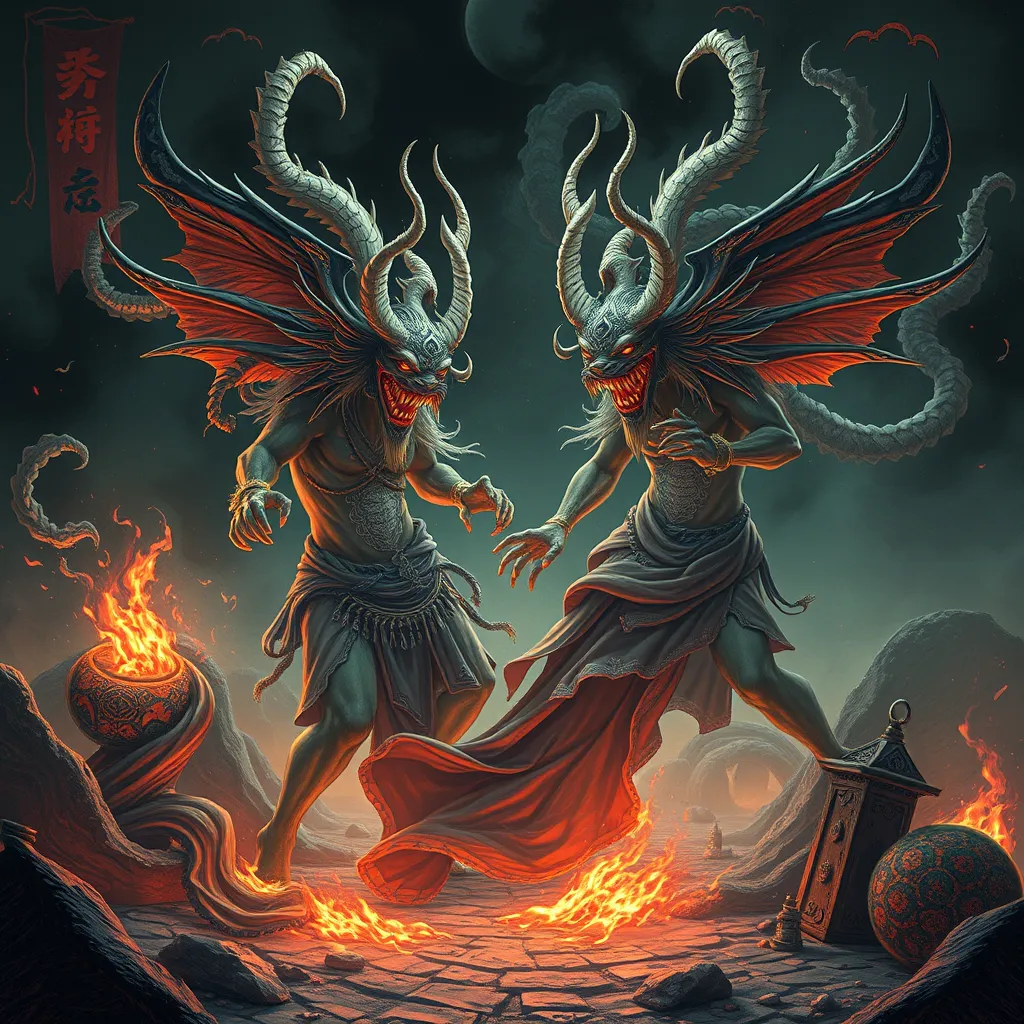The Sirens’ Song in Roman Literature: Analyzing Themes of Temptation and Fate
I. Introduction
The Sirens, mythological creatures known for their enchanting songs, hold a prominent place in literature, particularly within Roman texts. Their allure is not merely a source of fascination but serves as a profound symbol of temptation and the struggle against fate. In this article, we will explore the significance of the Sirens in Roman literature, focusing on the overarching themes of temptation and fate, and how these elements are intricately woven into the narratives of key Roman authors.
II. The Mythological Origins of the Sirens
The origins of the Sirens can be traced back to Greek mythology, where they were often depicted as beautiful maidens with irresistible voices. According to legend, they lured sailors to their doom on rocky shores, symbolizing the dangers of temptation and desire. Over time, Roman adaptations of this myth evolved, bringing new interpretations and deeper meanings to these captivating figures.
- Historical Context: In ancient Greece, Sirens were often associated with the themes of knowledge and the consequences of seeking forbidden truths.
- Roman Adaptations: The Romans transformed the Sirens into more complex characters, often portraying them as both alluring and malevolent.
- Symbolism: Sirens symbolize the duality of desire and destruction, representing the perilous allure of temptation.
III. Temptation: The Allure of the Sirens’ Song
The songs of the Sirens serve as a powerful metaphor for temptation in Roman literature. Their enchanting melodies represent the seductive nature of desire, which can lead individuals to their downfall. Key Roman texts illustrate this theme vividly.
A. Analysis of the Sirens’ Song as a Metaphor for Temptation
The Sirens’ song embodies the seductive pull of temptation, drawing characters away from their intended paths. It evokes the struggle between desire and duty, highlighting the consequences of succumbing to such allure.
B. Case Studies: Key Roman Texts Featuring the Sirens
- Virgil’s “The Aeneid”: In this epic, the Sirens represent a critical test for Aeneas, who must navigate his responsibilities as a leader while resisting their call.
- Ovid’s “Metamorphoses”: Ovid explores the transformative power of the Sirens’ song, illustrating how their lure can alter destinies.
C. The Impact of Temptation on Characters’ Fates
In both texts, the characters’ responses to the Sirens’ temptation significantly shape their fates. Aeneas’s ability to resist the Sirens exemplifies the triumph of duty over desire, while those who succumb face dire consequences.
IV. Fate and Free Will: The Struggle Against the Sirens
The interplay between fate and free will is a central theme in Roman literature, particularly in the context of the Sirens. Characters often grapple with their destinies while confronting the seductive nature of temptation.
A. The Concept of Fate in Roman Literature
Fate, or “fatum,” plays a crucial role in guiding characters’ journeys. It is often depicted as an inescapable force that shapes their lives, leading to the tension between predetermined destinies and personal choices.
B. Characters’ Responses to the Sirens’ Temptation
- Odysseus and His Crew: In Homer’s “Odyssey,” Odysseus famously plugs his crew’s ears with beeswax and has himself tied to the mast to resist the Sirens’ song, showcasing the struggle between desire and reason.
- Aeneas and the Prophesized Journey: Aeneas, guided by fate, must resist the Sirens to fulfill his destiny of founding Rome, illustrating the conflict between temptation and duty.
C. Implications of Choice and Consequence in the Face of Temptation
The choices made by these characters reflect the broader implications of free will in relation to fate. The consequences of their decisions resonate throughout their journeys, ultimately shaping their legacies.
V. The Sirens as Agents of Destruction
The Sirens are not merely symbols of temptation; they also embody destruction. Their songs have the potential to lead to ruin, reflecting the darker side of desire.
A. Examination of the Destructive Potential of the Sirens
The Sirens can be seen as agents of chaos, capable of dismantling the lives of those who fall victim to their allure. Their songs signify the destructive nature of unchecked desire.
B. The Role of the Sirens in Shaping Narratives and Character Arcs
In Roman literature, the presence of the Sirens often catalyzes character development, forcing protagonists to confront their inner conflicts and make pivotal choices.
C. Consequences Faced by Those Who Succumb to Temptation
Characters who succumb to the Sirens often face dire consequences, serving as cautionary tales about the dangers of yielding to temptation.
VI. Cultural Reflections: The Sirens in Roman Society
The Sirens reflect the values and fears of Roman society, serving as both a mirror and a cautionary figure in their narratives.
A. The Sirens as a Reflection of Roman Values and Fears
In a society that valued duty, honor, and virtue, the Sirens represented the antithesis of these ideals, embodying the perilous nature of desire.
B. Influence of the Sirens’ Myth on Roman Art and Culture
The Sirens inspired various forms of art, from poetry to sculpture, emphasizing their lasting impact on Roman cultural expressions.
C. The Sirens as a Cautionary Tale for Roman Audiences
Through their narratives, the Sirens serve as a warning against the dangers of temptation, reinforcing moral lessons relevant to Roman audiences.
VII. Comparative Analysis: The Sirens in Other Literary Traditions
The Sirens’ myth is not unique to Roman literature; it has been referenced across various cultures and literary traditions.
A. Brief Overview of the Sirens in Greek Literature
In Greek literature, the Sirens are primarily portrayed as perilous beings that lure sailors to their deaths, emphasizing the theme of irresistible temptation.
B. How Roman Interpretations Differ from Other Cultures
Roman adaptations often imbue the Sirens with deeper psychological complexity, exploring their roles as both seducers and destroyers.
C. Themes of Temptation and Fate in Global Literature
Similar themes of temptation and fate can be found in global literature, showcasing the universality of these concepts across cultures.
VIII. Conclusion
In summary, the Sirens’ song in Roman literature serves as a rich tapestry through which themes of temptation and fate are explored. From their mythological origins to their implications in character narratives, the Sirens symbolize the complex interplay between desire, choice, and consequence. Their enduring legacy continues to resonate in contemporary discussions of temptation and human experience, reminding us of the timeless struggle against the alluring call of the Sirens.



